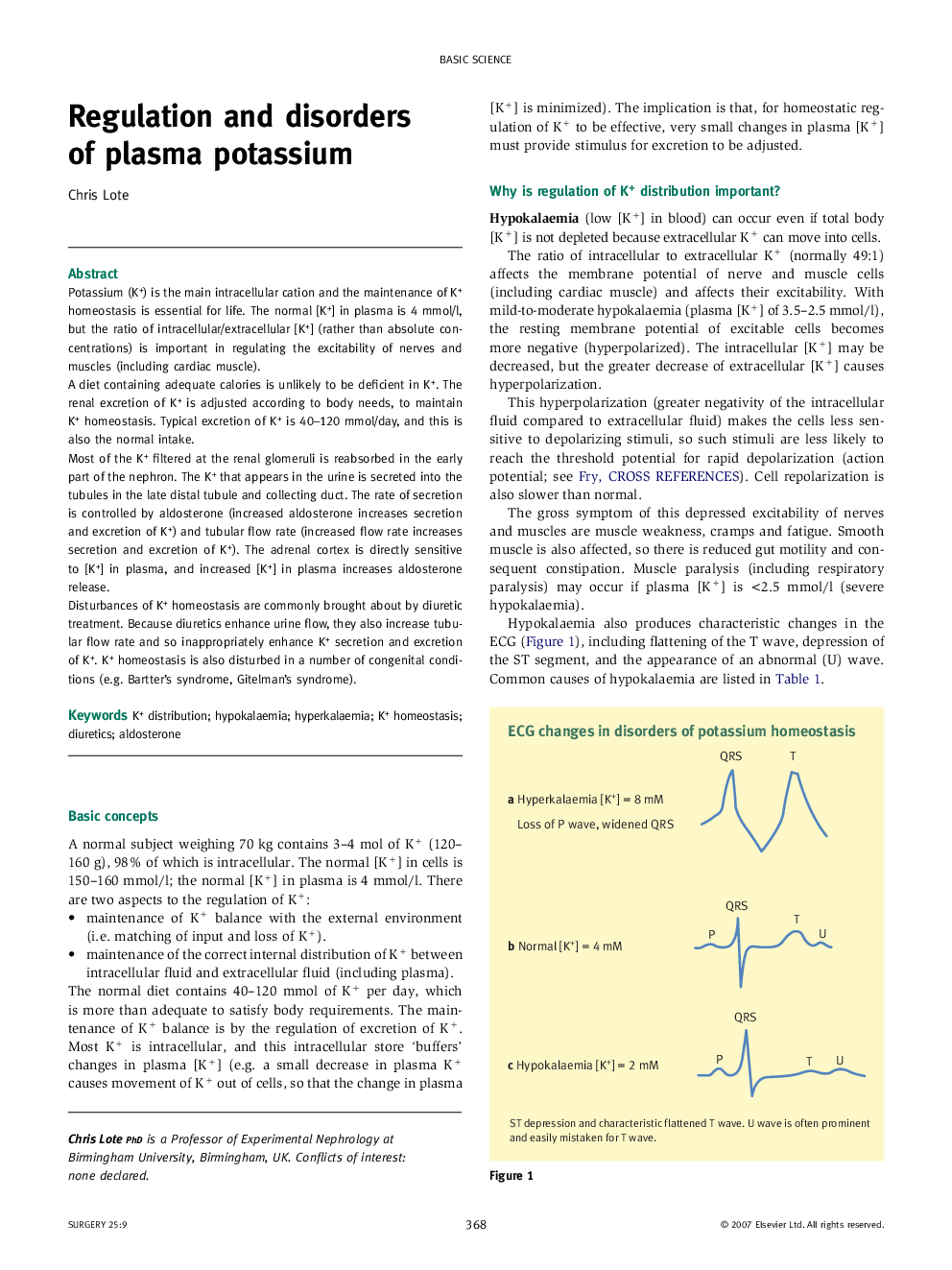| کد مقاله | کد نشریه | سال انتشار | مقاله انگلیسی | نسخه تمام متن |
|---|---|---|---|---|
| 3839452 | 1247790 | 2007 | 7 صفحه PDF | دانلود رایگان |

Potassium (K+) is the main intracellular cation and the maintenance of K+ homeostasis is essential for life. The normal [K+] in plasma is 4 mmol/l, but the ratio of intracellular/extracellular [K+] (rather than absolute concentrations) is important in regulating the excitability of nerves and muscles (including cardiac muscle).A diet containing adequate calories is unlikely to be deficient in K+. The renal excretion of K+ is adjusted according to body needs, to maintain K+ homeostasis. Typical excretion of K+ is 40–120 mmol/day, and this is also the normal intake.Most of the K+ filtered at the renal glomeruli is reabsorbed in the early part of the nephron. The K+ that appears in the urine is secreted into the tubules in the late distal tubule and collecting duct. The rate of secretion is controlled by aldosterone (increased aldosterone increases secretion and excretion of K+) and tubular flow rate (increased flow rate increases secretion and excretion of K+). The adrenal cortex is directly sensitive to [K+] in plasma, and increased [K+] in plasma increases aldosterone release.Disturbances of K+ homeostasis are commonly brought about by diuretic treatment. Because diuretics enhance urine flow, they also increase tubular flow rate and so inappropriately enhance K+ secretion and excretion of K+. K+ homeostasis is also disturbed in a number of congenital conditions (e.g. Bartter’s syndrome, Gitelman’s syndrome).
Journal: Surgery (Oxford) - Volume 25, Issue 9, September 2007, Pages 368–374